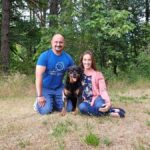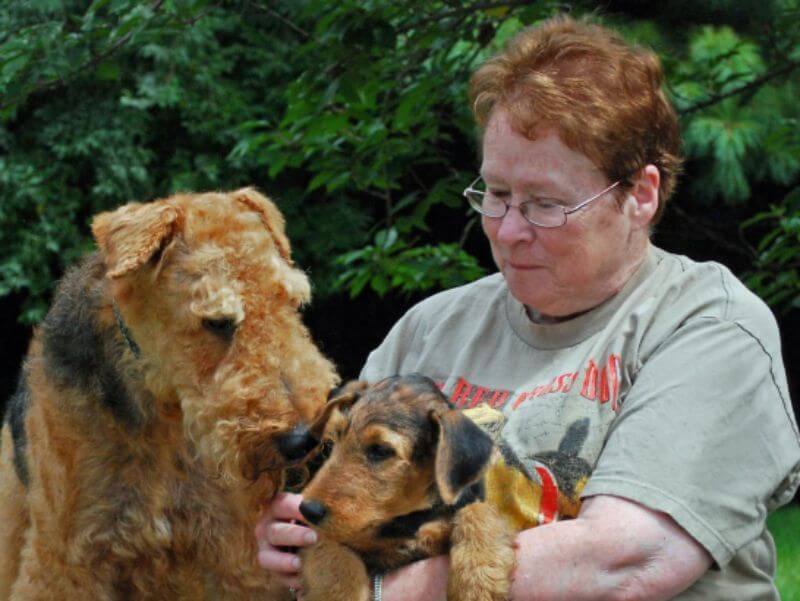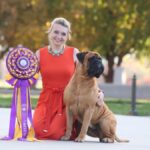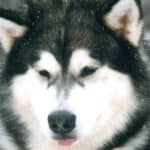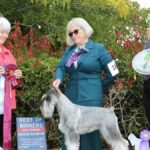Interview with Susan Rodgers, Breeder of Stirling Airedale Terriers
Please tell us a little bit about yourself. Where do you live? What is your breed? What is your kennel name? Do you have a website? How long have you been in dogs? How long have you been breeding dogs? Who are some of your best-known dogs?
Susan Rodgers: I am a long-time New Englander living in rural, wooded Monson, Massachusetts, which nicely muffles dog barking. The kennel name is Stirling and all of our Airedale Terriers are registered under that prefix. After 40 years owning and operating a boarding business, I closed the boarding portion because of my age; the website has also been taken down as I am no longer breeding dogs. The kennel still serves as a site for assisting with show grooming and mentoring people interested in learning about Airedales.
Stirling has bred over 60 Champions, with many Specialty winners and sires of Specialty winners for other breeders. The most well-known is CH Stirling Cool Hand Luke. “Lucas” was a multiple Specialty and BIS winner.
As a Breeder, can you share your thoughts on your breed today? Is breed type strong? Are there things to be concerned about? Are there any health-related issues? Have you worked with breeders overseas? Are pet homes typically available for your breed?
Susan Rodgers: Thoughts on the Airedale Terrier today: Of course, there are changes over time. I received my first as a child during WWII as a companion for Mom and me. I began attending local shows with my aunt, as she was an avid enthusiast owning both Wires and Airedales since her childhood. My family actually began with Airedales around 1890, importing their first when moving to the States.
For the most part, the breed has changed, most notably, much less coat, especially furnishings, more variety in quality of coat, and shades of the black and tan much more standard today. They are a bit less leggy and have more consistency of type.
My first litter was whelped in 1965, and just as today, most of the puppies went to people who had owned them previously, often in England. Potential buyers are not encouraged to purchase an Airedale, as this breed is not a good choice for new owners. Those owners who are experienced do well with the challenges of raising and socializing these rascals.
As an Exhibitor, can you comment on recent entries in your breed? Are majors available in your area? Does your breed often participate in Companion and Performance events? How can newcomers in your breed be encouraged to join the sport of dogs?
Susan Rodgers: As in many breeds, quality tends to change over time, often not for the better. Since I have become a spectator rather than an exhibitor, I have time and opportunity to observe and listen at ringside. Over time, the shoulders have tended to remain straight without good layback. This poor angulation in the front assembly fosters a longer neck, allowing for elegance which is not in the Standard. The Airedale is a strong hunter of moderate to large game, requiring a strong neck with good muscle. Nowhere in the Standard does it refer to “pretty” or “elegant.”
Recently, all areas of the country are experiencing a serious decline in terrier entries. We all know most of the reasons for this change; however, a reason for reduction in terrier entries relates to the feisty, independent temperament of these breeds and the size of the Airedale. Preparation of a large terrier for the show ring is a challenge for the young newcomer and the arthritic, experienced groomer.
What are the biggest challenges facing the dog show community as a whole and how can we address them? And finally, what are some of the positive changes you’ve seen in your breed and in the dog show community as a whole over the past decade?
Susan Rodgers: A major challenge to the dog show community is a system of rewards for newcomers to Conformation. In the past, club-sanctioned matches provided a fun experience for the new exhibitor and it was so rewarding to go home with a ribbon of any color, new friends in your breed, new information about the sport, and invitations to future events.
